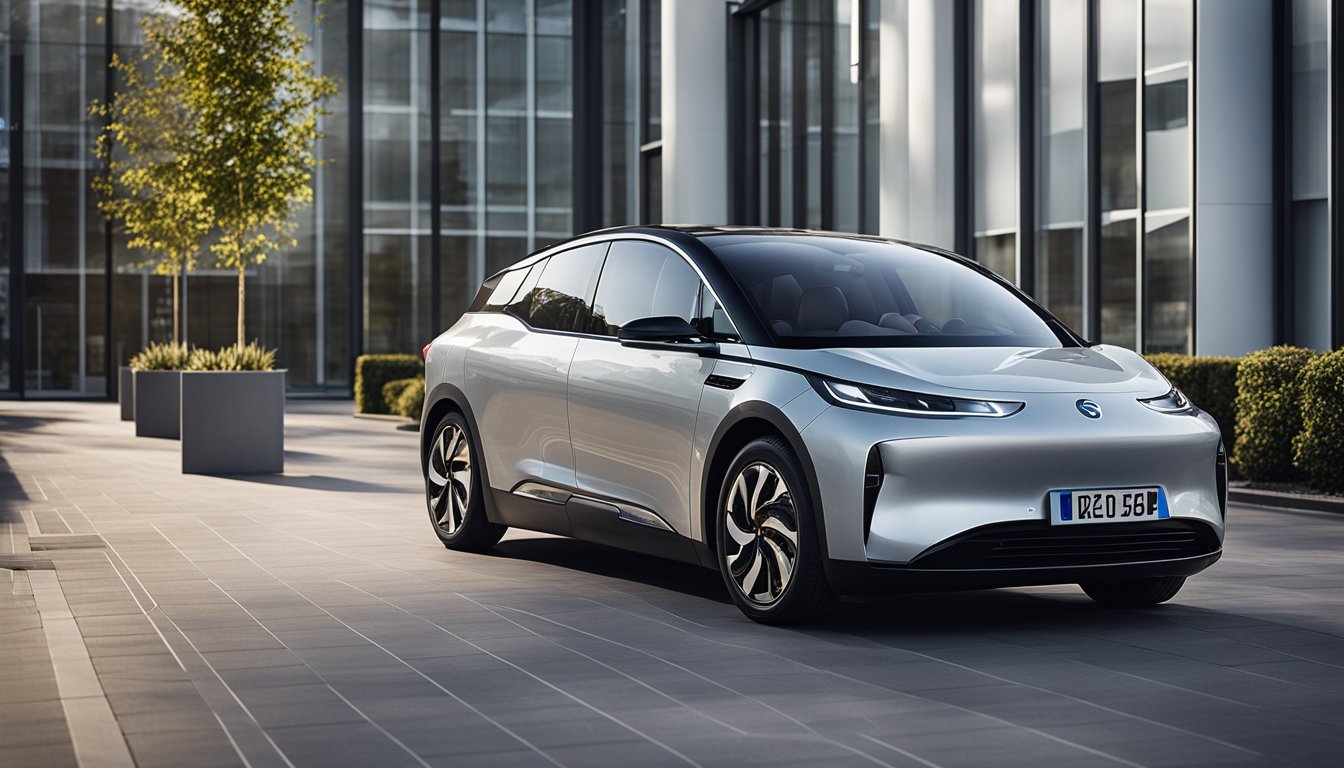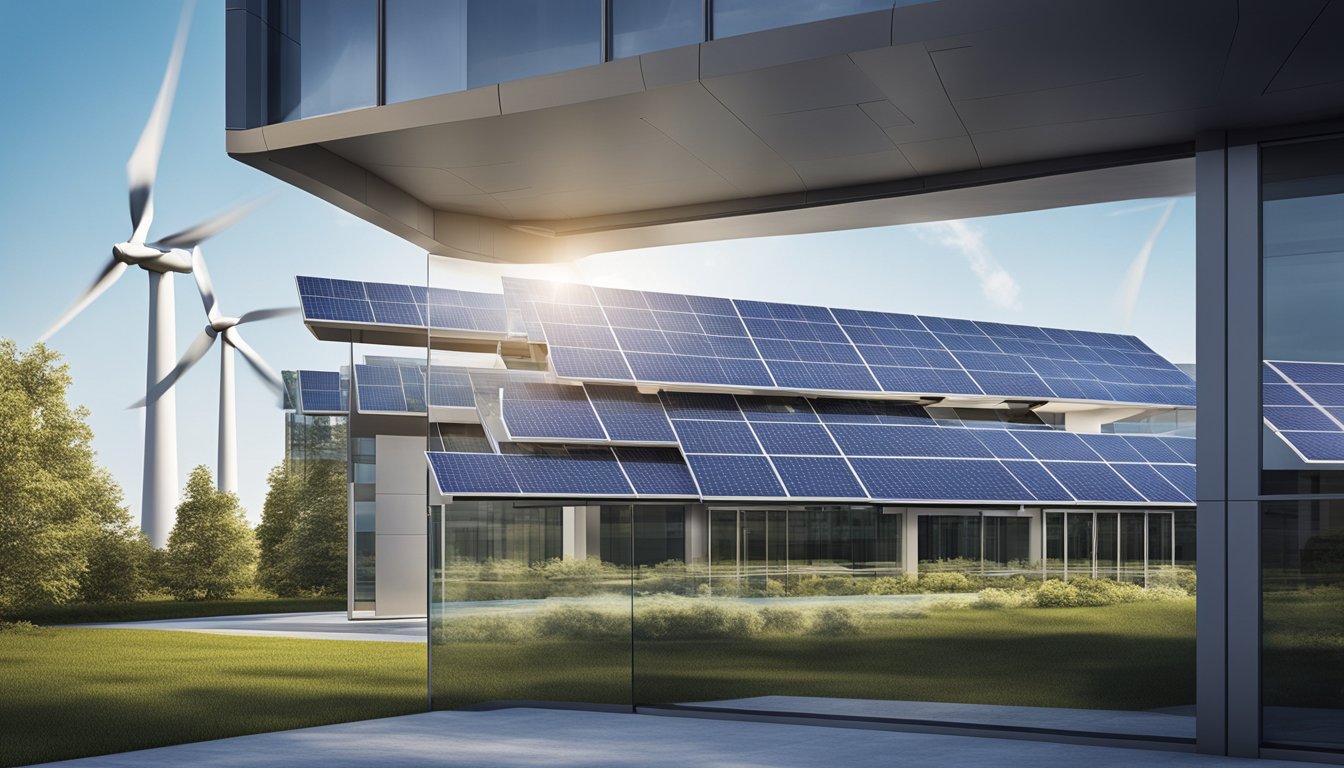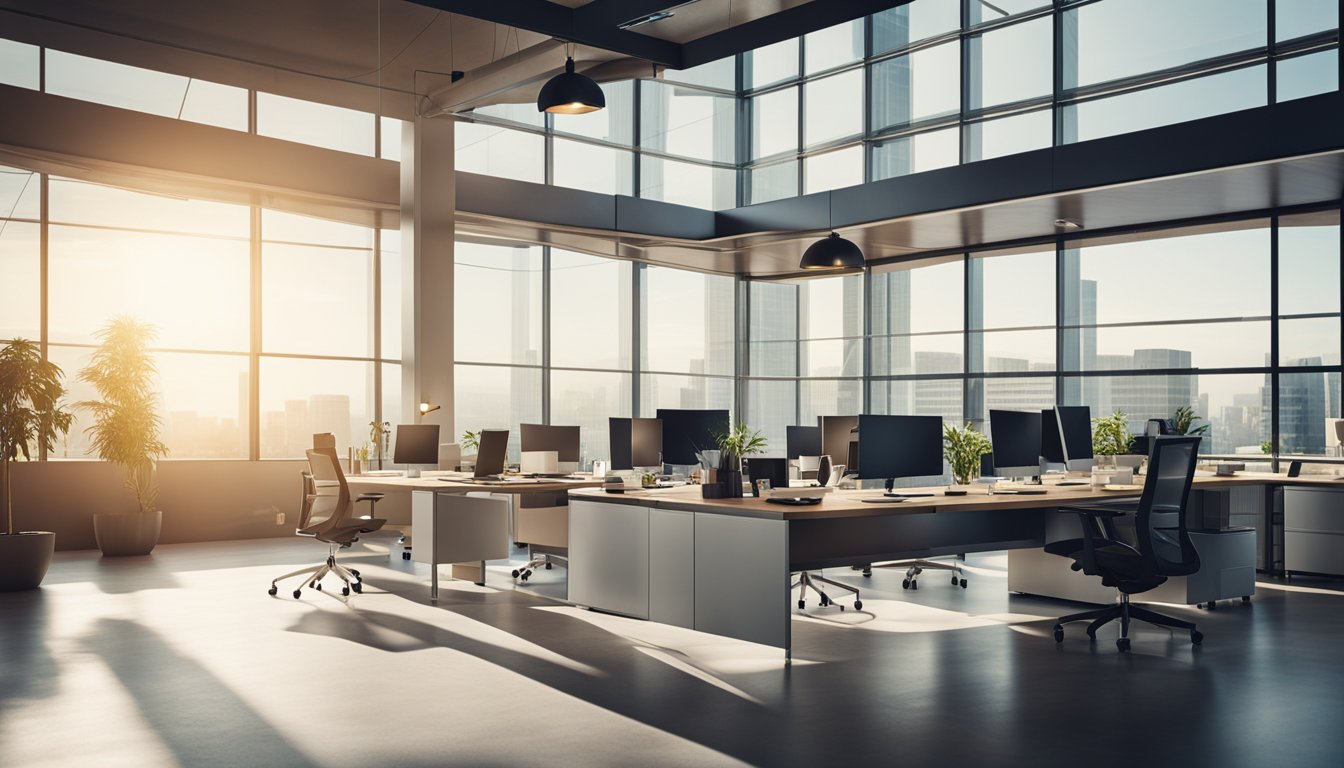Late updated: 30 Oct 2024 16:10
Written by: Amber Collins
Innovative Energy-Efficient Solutions For UK Offices: Transforming Workspaces
As the world grapples with climate change, UK office buildings are stepping into the spotlight to spearhead energy efficiency. With legislative milestones like the UK's commitment to net zero emissions by 2050, we see an unprecedented push towards sustainable practices. Energy-efficient solutions not only help reduce carbon emissions but also offer significant cost savings for businesses in the long run.

Innovative approaches in retrofitting existing office spaces have emerged as a crucial element in achieving these goals. From the integration of advanced HVAC systems to simple solutions like switching to LED lighting, these strategies align with eco-friendly mandates while enhancing operational efficiency. In the quest for sustainable interiors, businesses are discovering the dual benefits of reduced environmental impact and improved workplace comfort.
As we explore these solutions, we aim to uncover not just the technologies themselves but also the value they bring to businesses and the environment. By integrating renewable energy sources and investing in energy-efficient retrofits, UK businesses can not only contribute to combating climate change but also enjoy improved economic performance.
Key Takeaways
- Energy-efficient solutions are essential for reducing carbon emissions in office buildings.
- Retrofitting and renewable energy integration can enhance both sustainability and cost savings.
- Practical strategies improve energy efficiency and support climate change goals.
Key Strategies for Energy Efficiency in UK Office Buildings
Improving energy efficiency in UK office buildings involves a holistic approach. By focusing on advanced HVAC systems, smart lighting, and enhanced insulation, we can significantly reduce energy consumption and contribute to sustainability goals.
Implementing HVAC System Improvements
Heating, ventilation, and air conditioning (HVAC) systems are significant contributors to a building's energy use. Implementing smarter HVAC solutions can lead to substantial savings and improved efficiency. One effective strategy is to use demand-controlled ventilation.
This adjusts the airflow based on the number of occupants, ensuring that energy is not wasted on unnecessary heating or cooling. Additionally, incorporating energy-recovery ventilation systems can further optimise energy efficiency by recovering heat from exhaust air.
Regular maintenance is crucial to ensure these systems operate at peak efficiency. By updating HVAC systems with the latest energy-efficient technologies, such as variable refrigerant flow systems, we can reduce electricity consumption and enhance overall building comfort.
Adopting Smart Lighting Solutions
Lighting represents a vital opportunity for energy savings. Adopting smart lighting systems and natural lighting solutions can dramatically lower energy demand. Smart lighting technology, such as LED bulbs integrated with motion sensors, adjusts lighting based on occupancy and natural light availability.
Natural light should be maximised through strategic window placement and the use of reflective surfaces. This not only reduces the need for artificial lighting but also enhances employee well-being. Implementing daylight harvesting techniques, which dim artificial lights when sufficient natural light is available, can considerably lower electricity usage.
By combining these smart solutions, we improve our energy efficiency efforts while maintaining an inviting and productive office environment.
Enhancing Insulation and Building Envelope
A well-insulated building envelope is critical for maintaining efficient energy use. Proper insulation minimises heat loss in winter and keeps heat out during summer, reducing the burden on HVAC systems. Upgrading to advanced insulation materials, such as spray foam or rigid foam panels, can result in significant energy savings.
Additionally, sealing gaps in windows, doors, and walls prevents unwanted air leakage. Installing double or triple-glazed windows further improves insulation. Incorporating materials that reflect solar radiation, such as cool roofing technology, also plays a role in maintaining a stable indoor climate.
Focusing on the building envelope ensures a consistent, comfortable indoor environment, aligning with Minimum Energy Efficiency Standards (MEES) and reducing our overall carbon footprint.
Integrating Renewable Energy and Retrofitting

In our pursuit of carbon neutrality, integrating renewable energy and retrofitting is essential. The focus is on utilising renewable energy sources, executing effective commercial retrofit projects, and ensuring optimum performance through diligent monitoring and maintenance.
Utilising Renewable Energy Sources
One of the most impactful strategies involves the installation of renewable energy systems, such as solar panels, to reduce reliance on fossil fuels. Incorporating these systems helps in achieving net zero carbon emissions by generating clean energy onsite. These systems, when combined with advanced energy-efficient appliances, contribute significantly to overall energy reductions.
Integrating renewable energy isn't just about installation. We must consider the efficiency, capacity, and orientation of these systems to maximise energy generation. Energy audits help determine the best renewable sources for each building, ensuring cost-effectiveness and environmental benefits. Additionally, incentives like the Green Business Fund can support organisations in making these investments.
Executing Commercial Retrofit Projects
Commercial retrofits involve a holistic approach to upgrade office buildings with energy optimisations. These projects may include the installation of insulation materials, high-efficiency HVAC systems, and smart building technologies. Such measures help reduce energy use and improve indoor air quality while enhancing overall building performance.
Buildings seeking LEED certification must incorporate sustainable practices throughout the retrofit process. Deep retrofits are often necessary to realise full energy savings potential. By involving stakeholders and customising solutions to building needs, we can significantly lessen the carbon footprint while enhancing the corporate reputation of businesses committed to sustainability.
Monitoring and Maintaining for Optimum Performance
Post-retrofit, continuous monitoring and maintenance are vital to ensure ongoing efficiency. Regular maintenance cycles should address potential issues, like those in office air conditioning systems, before they impact performance. Building optimisation technologies can provide real-time data to track energy use and effectiveness, allowing us to make informed decisions.
It's important to establish a routine for recycling and updating renewable energy equipment as technology advances. Scheduled assessments should also verify that all systems operate at peak efficiency. An emphasis on education and training for facility managers aids in maintaining high standards, thus supporting long-term energy reduction goals.
Frequently Asked Questions

Our aim is to address the most pressing questions surrounding energy-efficient innovations within UK offices. From implementing cutting-edge technologies to understanding governmental incentives, we provide insights into the strategies that can drive sustainability in the workplace.
How can UK offices implement the latest energy-saving technologies?
UK offices can incorporate advanced HVAC systems, LED lighting, and smart energy management systems. These technologies improve energy efficiency by optimising power usage and reducing waste. Sensor-based lighting and energy-efficient appliances also contribute significantly by adjusting consumption based on real-time needs.
What strategies are currently employed in UK offices to achieve net-zero energy buildings?
Many UK offices are adopting renewable energy generation, such as solar panels, paired with energy storage systems. Utilising passive solar design and implementing rigorous insulation standards further helps in achieving net-zero targets. Encouraging the use of energy-efficient office equipment is another effective strategy.
Which energy efficiency measures are recommended by UK energy experts for office environments?
Experts often recommend retrofitting older buildings with double glazing and advanced insulation. Upgrading to energy-efficient boilers and integrating smart building technology can offer substantial savings. Regular energy audits and bespoke energy plans also ensure continuous improvement in efficiency.
What are the government incentives available for UK offices to improve energy efficiency?
The UK government offers the Enhanced Capital Allowance (ECA) scheme, which provides tax relief for energy-efficient equipment investments. Additionally, programmes like the Green Business Fund offer advice and funding opportunities to small and medium-sized enterprises aiming to improve energy efficiency.
How does the UK's energy efficiency strategy influence office design and operation?
The UK's strategy urges designers to focus on sustainability by ensuring new buildings meet stringent energy performance standards. This influences the incorporation of eco-friendly materials and low-energy designs, which subsequently guide operational practices that prioritise energy efficiency.
What are some case studies demonstrating successful energy efficiency improvements in UK office buildings?
One notable project involved retrofitting a London-based office with energy-efficient systems, reducing its carbon footprint by over 25%. Another case saw a Birmingham office implementing smart technologies that cut energy consumption by 30%. These examples highlight the tangible benefits of investing in energy efficiency.
